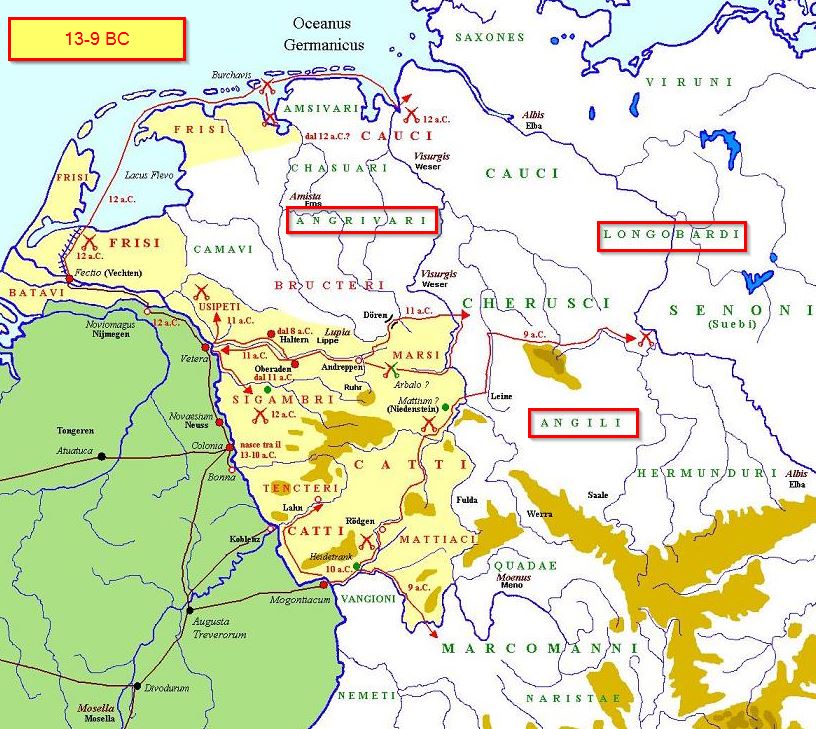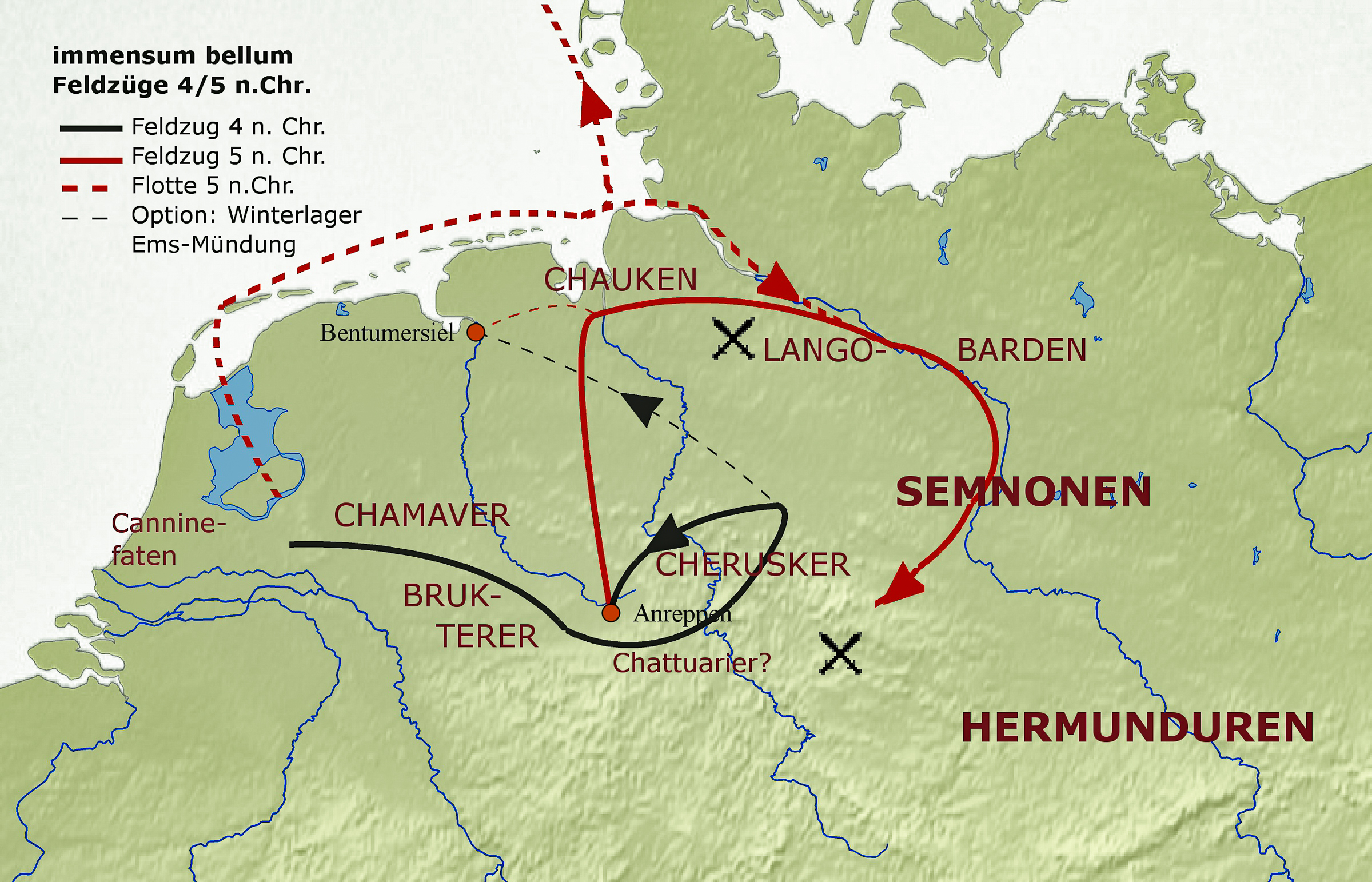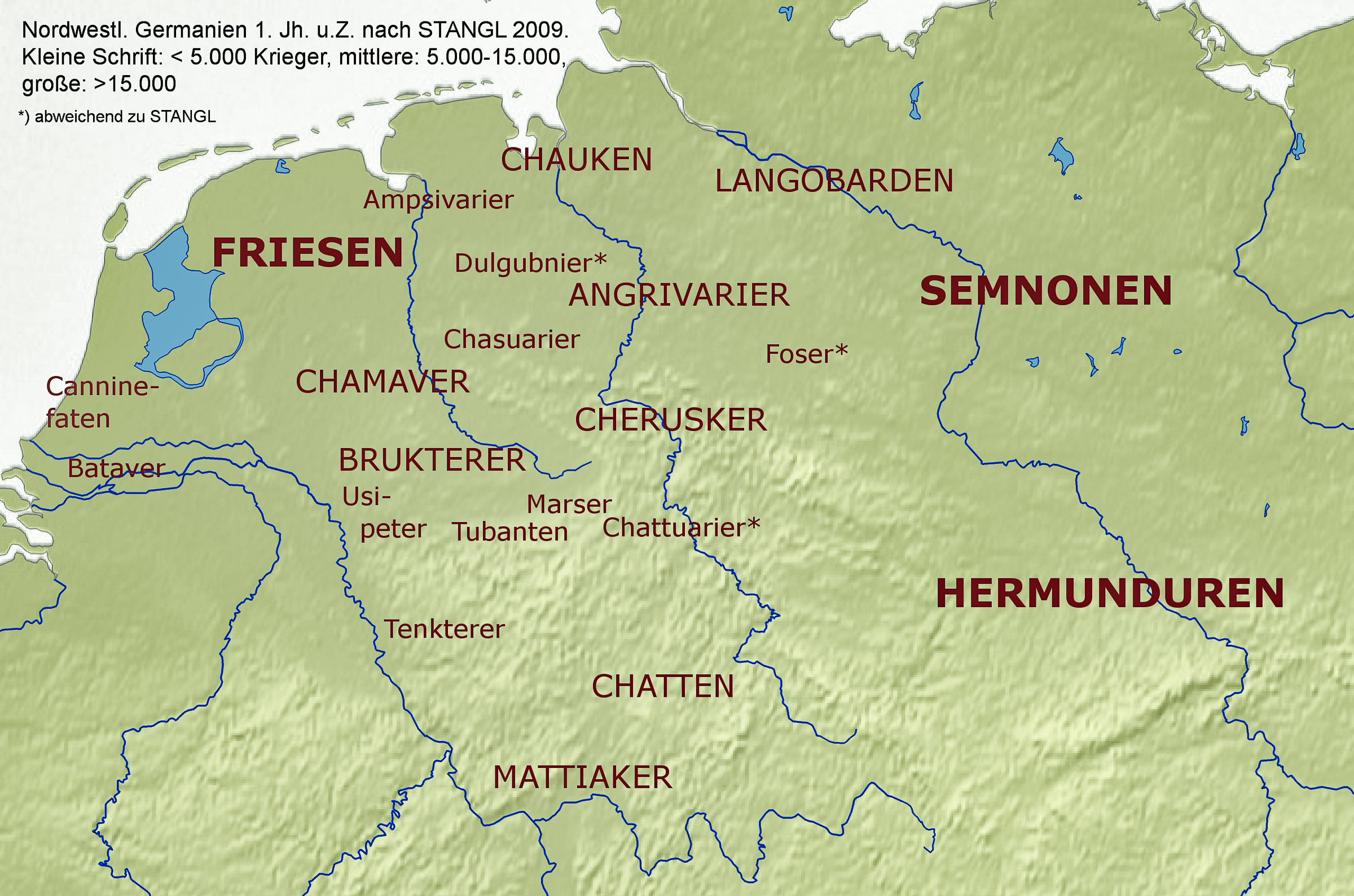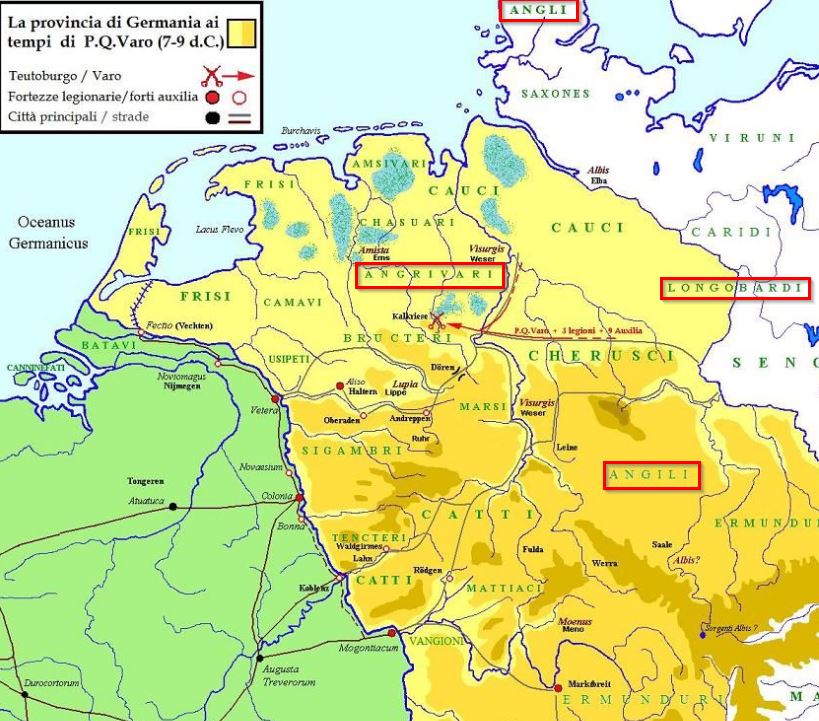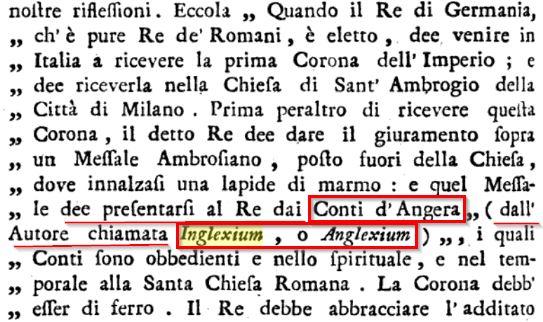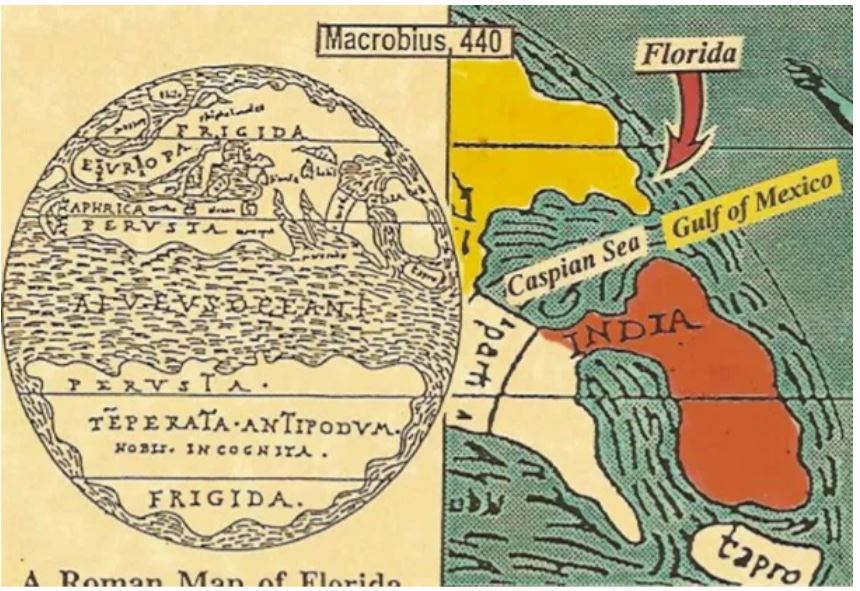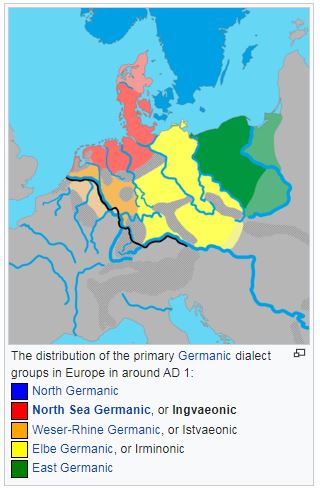Ross G. R. Caldwell wrote: 07 Oct 2020, 18:11
For the variation "Inglexium" "Inglexio" etc., consider that this is a Latinization of the form heard in the local dialect, which wikipedia says is "Ingera" -
Possibly neither Angera nor Ingera as local dialect did exist for the location, when the name Scazione was preferred for this old place at the Como lake. Then somebody must have invented the use of Angera, Ingera or similar.
Otto I, married, after his English wife Editha had died, in Italy Adelheid of Burgundy in 951, earlier the wife of the young King Lothar of Italy. Lothar died young, possibly as a victim of Berengar and Berengar had the wish, that Adelheid should marry now his own son. Adelheid didn't like that, and Berengar prisoned her somewhere at the Garda lake.
https://en.wikipedia.org/wiki/Adelaide_of_Italy
The English wiki doesn't tell the complex story how Adelheid escaped and how she arrived in the castle Canossa and that Berengar couldn't catch her and Otto I arrived and took her as wife and also Pavia and they went to bed and had some children and Otto II was produced and born in 955. And Otto I was the king of Italy. Or Lombardy. But he delegated that to Berengar and his son Adelbert for some time. Otto I got the crown for himself and his descendents in 961 and the Conti of Angera had something to do with it. If not immediately, then later, when the Visconti had Angera and called it Angera (or similar).

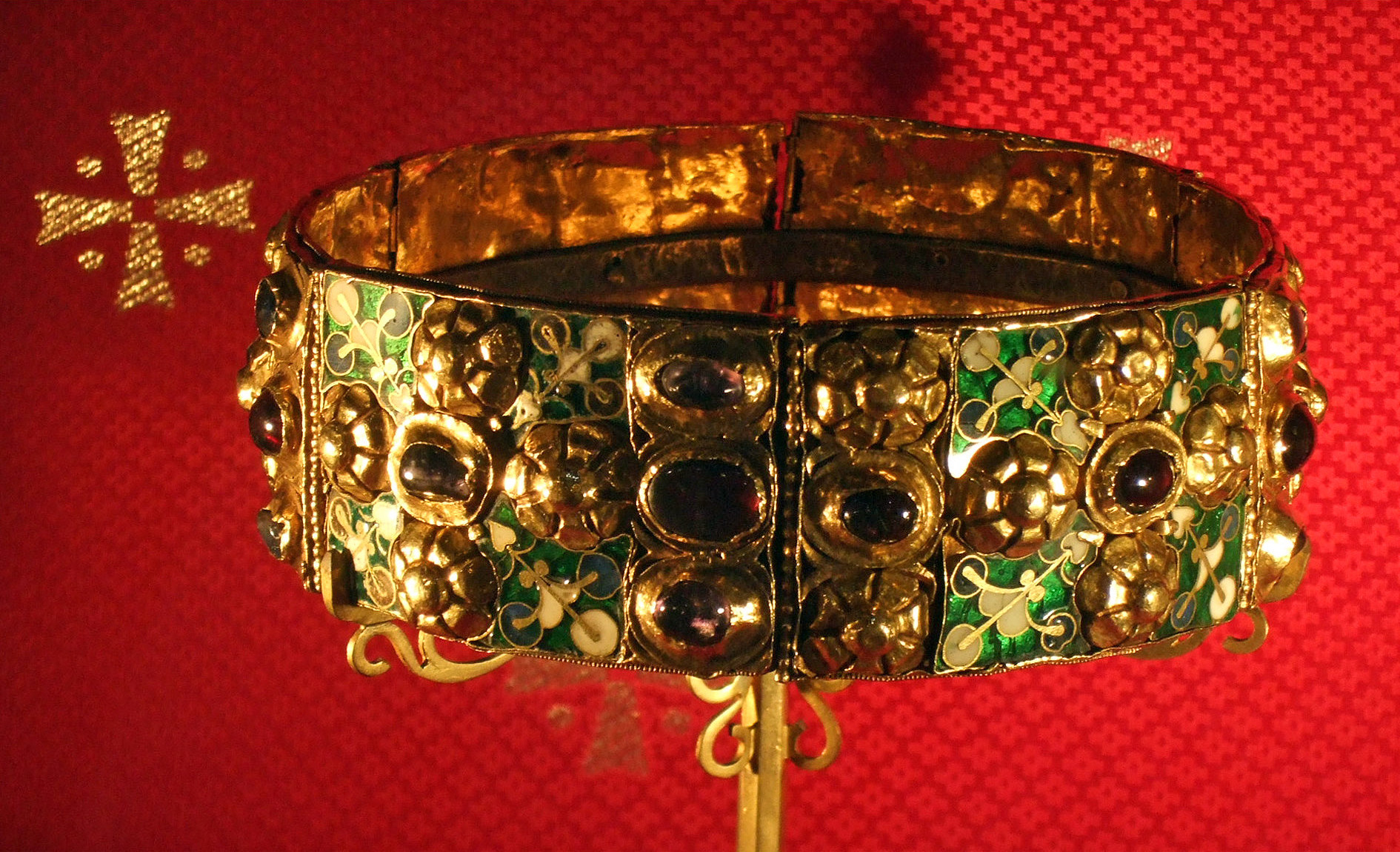
And before Otto I got Adelheid, Roman king Otto I had already the duchy of Saxony and this duchy had 3 parts Westfalen, ENGERN and Ostfalen and "Engern" is very similar to "Angera" as "New Amsterdam" is similar to "Amsterdam" (cause New Amsterdam was founded by Dutch persons) and "New York" is similar to "York" (cause a duke of York conquered New Amsterdam). So Engern is rather far from Angera, but Otto I, who knew Engern since his childhood was also very far from Engern, when he freed Adelheid in Canossa, and when he married her and when he did become King of Italy (961) and Emperor of the Empire in Rome (962).
The point is, if Otto I and the educated Saxons of his time knew about Longobards in their own region (Engern) in very old time (time of the Cherusker) and that these Longobards took a long way to become rulers in Italy since a few hundred years (since end of 6th.century). I guess, they knew something, at least by oral tradition.
We - perhaps - assume, that Guelphs and Ghibelline were an Italian problem .... but it had a Germanic start.
English wiki:
https://en.wikipedia.org/wiki/Della_Torre
The Della Torre (Torriani or Thurn) were an Italian noble family who rose to prominence in Lombardy during the 12th–14th centuries, until they held the lordship of Milan before being ousted by the Visconti.
The family originally sprang from the small fortified burgh of
Primaluna, in the Valsassina. ....
The first notable member was one Martino, nicknamed Il Gigante ("The Giant"), who fought in the Holy Land during the Crusades.
His son Jacopo married a Visconti, Berta, and was captain of Milan. His nephew Raimondo was bishop of Como in 1262–1273 and Patriarch of Aquileia (1273–1299), while another nephew, Salvino, was podestà of Vercelli.
Jacopo's son, Pagano, became capitano del popolo of Milan in 1240, holding the position until his death in 1247. His brother Martino (III) imposed his personal power over the city, beginning the Torriani lordship, which lasted some 50 years. He died in 1259 and was succeeded by another brother, Filippo. Torriani possessions included Bergamo, Lodi, Novara and Vercelli.
The Torriani were staunch members of the Guelph faction in Italy.
Napoleone, son of Pagano, gained power in Milan in 1265, but was defeated by the Visconti in 1277: he died the following year, imprisoned. His brother Francesco was podestà of Brescia, Alessandria, Bergamo, Lodi and Novara, and was killed in the Battle of Desio (1277), against the Visconti. With that victory the Visconti acquired power in Milan. In 1302 they were in turn ousted. Corrado Mosca, who had already been signore between 1277 and 1281, was returned to power, which he held until 1307, when he was succeeded by his son Guido.
Having tried to incite the people against the Emperor Henry VII, Guido was forced to flee, and died in 1312.
Florimondo della Torre, son of Corrado Mosca, attempted in vain to regain power in Milan.
So the della Torre family belonged to the Guelph party
German wiki:
https://de.wikipedia.org/wiki/Torriani_ ... eschlecht)
Napoleone della Torre, einer der zehn Söhne Paganos des Jüngeren, war von 1265 bis 1277 Reichsvikar der Lombardei unter König Rudolf von Habsburg, wurde aber 1277 von Erzbischof Ottone Visconti bei Desio besiegt und starb als Gefangener im Castello Baradello zu Como.
(Napoleono della Torre was in 1277 opponent of the Visconti and had worked some years for the Roman king Rudolf of Habsburg (who possibly belonged also to the Guelph party ?) .
https://de.wikipedia.org/wiki/Visconti
"Im 11. Jahrhundert besaßen die Visconti Ländereien am Comer See und am Lago Maggiore."
The Visconti had territory at the Lago Maggiore and at the lake of Como. This were probably Visconti Massino at the Lago Maggiore and Mariano Comense in the South of the city Como (actually not at the lake of Como, but this two locations are given by the Italian wiki article). Visconti Massino has 6 km distance to Angera, which are both at the Lago Maggiore, but at opposite sides of the lake.
The Lago Maggiore was a major trading route to the countries North of the Alps, so the control of the lake could lead to a lot of income.
Gian Galeazzo Visconti, Herzog von Mailand, gab Ende des 14. Jahrhunderts eine Genealogie in Auftrag, mit der die Visconti auf die Grafen von Angera zurückgeführt wurden, denen Papst Gregor der Große im Jahr 606 einige Königshöfe, darunter den in Mailand und Monza, verliehen haben soll.[1] Im Jahr 1397 gelang es Gian Galeazzo mit Hilfe dieses Konstrukts, dass der deutsche König Wenzel ihm den Adelsstand und den Titel eines Grafen von Angera zuerkannte. In dieser Genealogie treten auf:
Ottone, der im Ersten Kreuzzug, also im Jahr 1099 beim Kampf um Jerusalem einen arabischen Herrscher getötet haben soll; Hintergrund dieses Details ist eine gewünschte Erklärung für das Familienwappen, dessen Schlangenemblem von diesem Gegner übernommen worden sein soll.
Galvano Visconti, der Mailand gegen Kaiser Friedrich Barbarossa verteidigte, woraufhin ihm dieser den Titel eines Grafen von Angera entzog und ihn zum Vizegrafen herabstufte, was als Erklärung für den Familiennamen herhalten soll.
Gian Galeazzo Visconti gave the commission for the Visconti genealogy (end of 14th century), in which the Visconti are led back to the counts of Angera, who shall have gotten in the year 606 some king courts by Pope Gregor the Great (who - according wiki - had died in 604). Between these king courts were also the courts of Milan and Monza. In the year 1397 Gian Galeazzo reached with this construction, that King Wenzel gave him "Adelsstand" and the title of a count of Angera. In this genealogy appear:
a. Ottone (Visconti), who in the first crusade in the year 1099 in Jerusalem shall have killed an Arabian ruler; background of this detail is a desired explanation for the heraldic device of the Visconti-viper.
b. Galvano Visconti, who defended Milan in the war against Frederick Barbarossa, and who lost the title "count of Angera" for this and was degraded to the lower title "Vice count". This action should explain the name "Visconti".
The latter info is much better presented in Busch, p. 148 ff.
https://digi20.digitale-sammlungen.de/d ... ontext=606
Busch gives info, that the story of "606" has as an oldest known date in documents the year 1146 "after Milan was conquered by Friedrich Barbarossa" (which actually took place 1166). Also he insists, that the older reporting texts of the story used the name Inglexico (not Angera).
Ross, you wrote recently ...
For the variation "Inglexium" "Inglexio" etc., consider that this is a Latinization of the form heard in the local dialect, which wikipedia says is "Ingera" -
Angera (Ingera in dialetto varesotto)
https://it.wikipedia.org/wiki/Angera
Well, I think, that there was more a Langobardisierung of Latin than a Latinization of the Lombards.
Male Italian names 1427 (from c. 200 on the list)
https://www.behindthename.com/top/lists ... enaissance .... no Ing-, for I- Iacopo is the only one
Female Italian names (modern, from c. 200 on the list)
Ida (given name) - Ilaria (given name) - Imelda - Iolanda - Irene (given name) - Irma (name) - Isa (name) - Isabella (given name) ... no Ing-
German Ing-names of some distribution, as I know them just from friends
Ingo, Ingmar, (male) + Inge, Ingeborg, Ingrid (female)
1. Ingo: "Ingo is a masculine given name in contemporary Scandinavia and Germany, and a historical name in France. It is the male version of the name Inga, used in the same region. It means "protected by Yngvi", who is the main god for the Ingvaeones, and is probably a different name for the Germanic god Freyr."
2. Ingmar: "Ingmar is a Scandinavian given name and is a composite of Ing, possibly a Norse god, and Mar, meaning "famous". The name element Ing is also found in Ingvar, Ingolf, Ingeborg, and other names. Its name day is June 3. See also Ingemar."
3. Inge: "Inge is a given name in various Germanic language-speaking cultures. In Swedish and Norwegian, it is mostly used as a masculine, but less often also as a feminine name, sometimes as a short form of Ingeborg, while in Danish, Estonian, Frisian, German and Dutch it is exclusively feminine. The feminine name has the variant Inga. The name is in origin a hypocorism of names beginning in the element Ing- (such as Ingar, Inger, Ingrid, Ingeborg, Ingram, Ingvild, Ingunn etc.). These Germanic names made reference to either the god Ing or to the tribe of the Ingvaeones (who were presumably in turn named for the god)."
4. Ingeborg: "Ingeborg is a Germanic feminine given name, mostly used in Germany, Sweden, Norway and Denmark, derived from Old Norse Ingiborg, Ingibjǫrg, combining the theonym Ing with the element borg "stronghold, protection". Ingebjørg is the Norwegian most used variant of the name, and Ingibjörg is the Icelandic variant."
(all from English wiki)
5a. Ingrid, I prefer a part of the German wiki: "Zu Beginn des 20. Jahrhunderts war der Name Ingrid in Deutschland eher ungebräuchlich. Ab etwa 1910 kam er jedoch immer mehr in Mode. Vom Ende der zwanziger bis zum Anfang der fünfziger Jahre war er unter den zehn am häufigsten vergebenen weiblichen Vornamen, im Jahr 1934 sogar der häufigste überhaupt. Seine Popularität schwand jedoch während der fünfziger und sechziger Jahre, so dass heute kaum noch Kinder Ingrid genannt werden." (In short, the name was invented to Germany in 20th century, with an absolute height in 1934 (1st place). It lost its popularity nowadays. Then a list of name variants is given, connected to Northern countries.)
5b.:
dänisch: Inger, Ingerid, Ingfred, Ingred
färöisch: Ingirið, Ingrið
finnisch: Inker, Inkeri, Inkri
isländisch: Ingifríður, Ingiríður
litauisch: Ingrida
norwegisch: Ingefrid, Inger, Ingerid, Ingfrid, Ingfrida, Ingfryd, Ninni
polnisch: Ingryda
samisch: Iŋgir
schwedisch: Ingefrid, Inger, Ingifridh, Ingra, Ingri
slowakisch: Ingrida
Swedish Female Ing-names
https://www.nordicnames.de/w/index.php? ... agefrom=Ii
Inga - Ingabrit - Ingabrita - Ingabritt - Ingabritta - Ingalena - Ingali - Ingalice - Ingalie - Ingalil - Ingalill - Ingalina - Ingalis - Ingalisa - Ingalise - Ingaliss - Ingamaj . Ingamaja - Ingamari - Ingamaria - Ingamay - Ingar - Ingard - Ingbor - Ingborg - Ingbrit - Ingbrith + c. 100 other female Ing-names
Swedish Male Ing-names
https://www.nordicnames.de/w/index.php? ... agefrom=Ii
c. 50 names
All Swedish ing-names
https://www.nordicnames.de/namefinder/?region=sv
c. 180 Ing-names of c. 16.000 listed Swedish names
*************
India ... name of the land at the other end of the world (from European perspective)
Already Herodot (500 BC) knew the word Indika for India.
Strabon-map
Ing-etc. ... names for lands at this (European) end of the world (? I've to claim the copyright on this idea, I didn't get this from somebody else ... :-)?)
Ingaevones - Germanen (an expression, which included Scandinavians and other Northern people and was not limited to modern "Germans"), which lived at the sea, the expression was used by Plinius and Tacitus in a different manner with contradictions.
https://en.wikipedia.org/wiki/Ingaevones
https://de.wikipedia.org/wiki/Ingwäonen
Gods Yngvi-Freyr, also Inguin, Old English Ingƿine and Proto-Germanic Ingwaz
https://en.wikipedia.org/wiki/Yngvi
https://de.wikipedia.org/wiki/Yngvi
https://en.wikipedia.org/wiki/Freyr
https://de.wikipedia.org/wiki/Freyr
Hypothetical attempt to locate the Ingaevones:
(?) At this point I got the idea, that there was an old Indian god with the name "INDRA" ... German wiki says about him: "Indra (Sanskrit, m., इन्द्र „mächtig, stark“)ist eine vedische Gottheit, der jedoch im heutigen Glaubensleben des Hinduismus kaum noch Bedeutung zukommt." ... which means, that the god lost its importance in the modern world of Hinduism. Well, the Ing- gods also lost their importance. (?)
Indra should be older than Herodot's time ("Indra as a deity had a presence in northeastern Asia minor, as evidenced by the inscriptions on the Boghaz-köi clay tablets dated to about 1400 BCE." and "Indra is praised as the highest god in 250 hymns of the Rigveda – a Hindu scripture dated to have been composed sometime between 1700 and 1100 BCE.")
https://de.wikipedia.org/wiki/Indra
https://en.wikipedia.org/wiki/Indra

